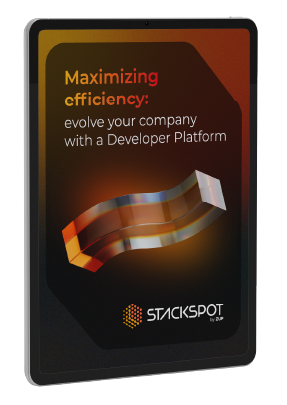Note: This blog post was created by the StackSpot Prompt Engineering team with the support of AI tools. This content underwent rigorous review for technical accuracy, content relevance, and well-written quality before its publication. Enjoy the read!
In today’s fast-paced digital landscape, businesses are constantly looking for ways to stay competitive and meet the ever-evolving needs of their customers. One critical aspect of this is legacy modernization, the process of upgrading outdated systems and technologies to keep up with the demands of the modern world. As CTOs, it is essential to stay ahead of the curve and be aware of the trends in legacy modernization. This blog post will explore key trends that CTOs need to know to ensure a successful modernization journey.
1 – Embracing Cloud-Native Technologies for Legacy Modernization
Legacy systems are often monolithic and tightly coupled, making introducing new technologies and scale efficiently challenging. However, the advent of cloud-native technologies has paved the way for accelerated legacy modernization.
Businesses can break down their monolithic applications into smaller, more manageable components by leveraging containers, microservices, and serverless architectures. This facilitates more manageable maintenance and enables seamless scalability and faster time-to-market for new features and enhancements.
2 – The Rise of AI and Machine Learning in Legacy Modernization
Artificial Intelligence (AI) and Machine Learning (ML) have gained immense popularity in recent years, revolutionizing various industries. Regarding trends in legacy modernization, AI and ML can play a crucial role in automating and streamlining the migration process. These technologies can analyze and understand the existing codebase, identify potential areas of improvement, and even automatically generate optimized code snippets.
By harnessing the power of AI and ML, businesses can accelerate their legacy modernization efforts while minimizing the risk of errors and reducing manual effort.
3 – Agile and DevOps for Faster Legacy Modernization
Legacy modernization projects are often perceived as time-consuming and resource-intensive. However, adopting Agile methodologies and DevOps practices can significantly speed up modernization.
Agile methodologies, such as Scrum or Kanban, break the project into smaller, manageable iterations, allowing for faster feedback and continuous improvement.
On the other hand, DevOps promotes collaboration between development and operations teams, enabling seamless integration, testing, and deployment of code changes.
By embracing Agile and DevOps, businesses can ensure faster and more efficient legacy modernization without compromising quality.
4 – Legacy Modernization for Enhanced Security and Compliance
Legacy systems are often prone to security vulnerabilities and may not meet the latest compliance standards. Legacy modernization provides an opportunity to address these concerns and strengthen the organization’s overall security posture.
By migrating to modern platforms and technologies, businesses can leverage advanced security features and protocols, ensuring data protection and secure access to critical resources.
Additionally, legacy modernization enables organizations to meet industry-specific compliance requirements, such as GDPR or HIPAA, and avoid potential legal and financial risks.
5 – The Challenge of Legacy Modernization Talent Gap
While the benefits of accelerated legacy modernization are undeniable, one of the significant challenges organizations face is the talent gap in legacy modernization expertise. As legacy technologies become less prevalent, finding professionals with the necessary skill set becomes increasingly tricky.
To overcome this challenge, organizations can invest in upskilling their existing workforce or partner with platform engineering companies that specialize in legacy modernization. These partnerships can provide access to a pool of experts with in-depth knowledge and experience in modernizing legacy systems, ensuring a smooth and successful transition.
Trends in legacy modernization: conclusion
Legacy modernization is a critical aspect of digital transformation, enabling businesses to stay competitive and meet the ever-evolving needs of their customers. Organizations can accelerate their legacy modernization efforts by embracing cloud-native technologies, leveraging AI and ML, adopting Agile and DevOps practices, and addressing security and compliance concerns.
However, CTOs need to be aware of the latest trends in legacy modernization to navigate the changing landscape successfully. With the right strategies and partnerships, businesses can unlock the full potential of legacy modernization and pave the way for a more agile, secure, and innovative future.
Unlock the power of Legacy Modernization with StackSpot!
Are you navigating the intricate maze of legacy modernization? Discover how StackSpot helps with this process.
Seamlessly integrate new-age technologies, benefit from tailored automation, and leverage AI-driven insights to transform your legacy systems. Don’t just modernize… revolutionize!
Dive into StackSpot now and be the catalyst for your company’s digital metamorphosis. Explore StackSpot today!












